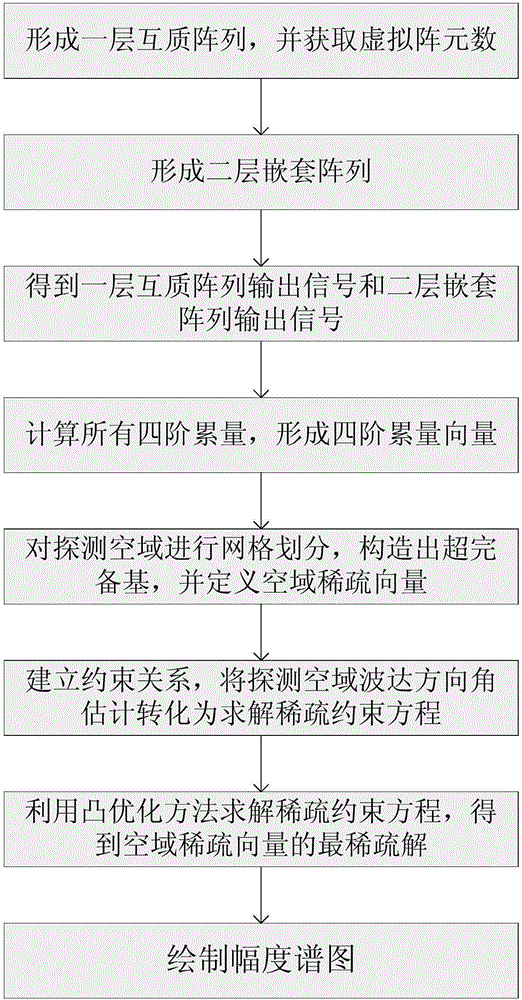Dual-layer-hybrid-array-based estimation method for direction angle of arrival
A direction-of-arrival and array technology, which is applied in the field of signal processing, can solve the problems of not properly setting the position of the array element, the maximum utilization rate of the array element, the inability to estimate enough signals, and the waste of reconnaissance and positioning resources for target reconnaissance, so as to avoid The effects of target reconnaissance errors, increasing the number of sources, and improving array utilization
- Summary
- Abstract
- Description
- Claims
- Application Information
AI Technical Summary
Problems solved by technology
Method used
Image
Examples
Embodiment Construction
[0033] The technical solutions and effects of the present invention will be further described in detail below with reference to the accompanying drawings.
[0034] attached figure 1 , the concrete steps of the present invention are as follows:
[0035] Step 1: Use the antenna receiver to form a coprime array and obtain the number of virtual array elements.
[0036] (1a) Define each antenna receiver as an array element, use N antenna receivers to form the first uniform linear array a, and the array element spacing is Md; use 2M-1 antenna receivers to form the second uniform linear array b , the array element spacing is Nd; define the first array element of the first uniform linear array a as the initial array element, where N>M≥2 and M and N are mutually prime, 0<d≤λ / 2, λ is the narrowband signal wavelength incident on the array;
[0037] (1b) Combine the first uniform linear array a and the second uniform linear array b into a layer of coprime array:
[0038]Place the firs...
PUM
 Login to View More
Login to View More Abstract
Description
Claims
Application Information
 Login to View More
Login to View More - R&D
- Intellectual Property
- Life Sciences
- Materials
- Tech Scout
- Unparalleled Data Quality
- Higher Quality Content
- 60% Fewer Hallucinations
Browse by: Latest US Patents, China's latest patents, Technical Efficacy Thesaurus, Application Domain, Technology Topic, Popular Technical Reports.
© 2025 PatSnap. All rights reserved.Legal|Privacy policy|Modern Slavery Act Transparency Statement|Sitemap|About US| Contact US: help@patsnap.com



